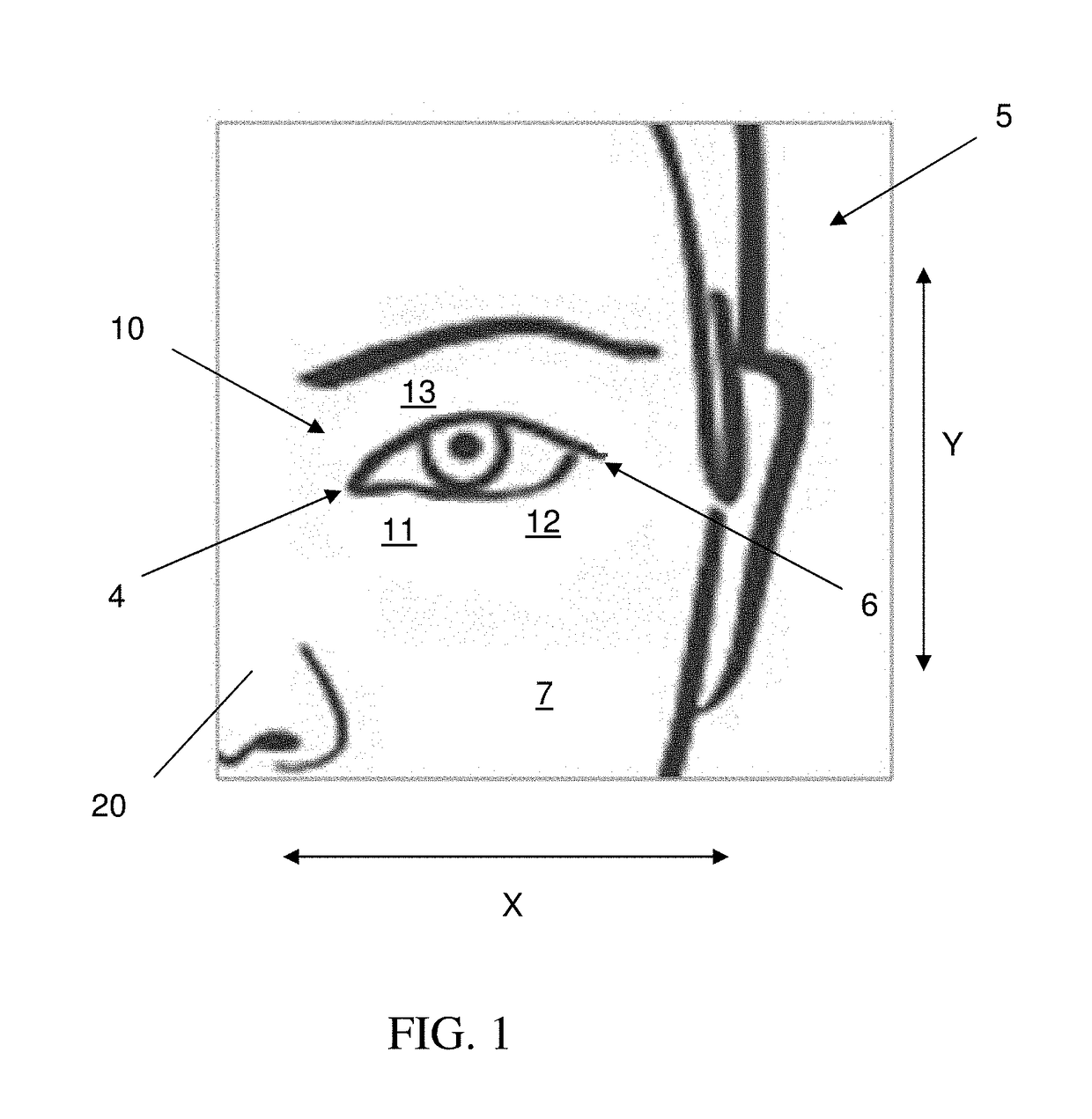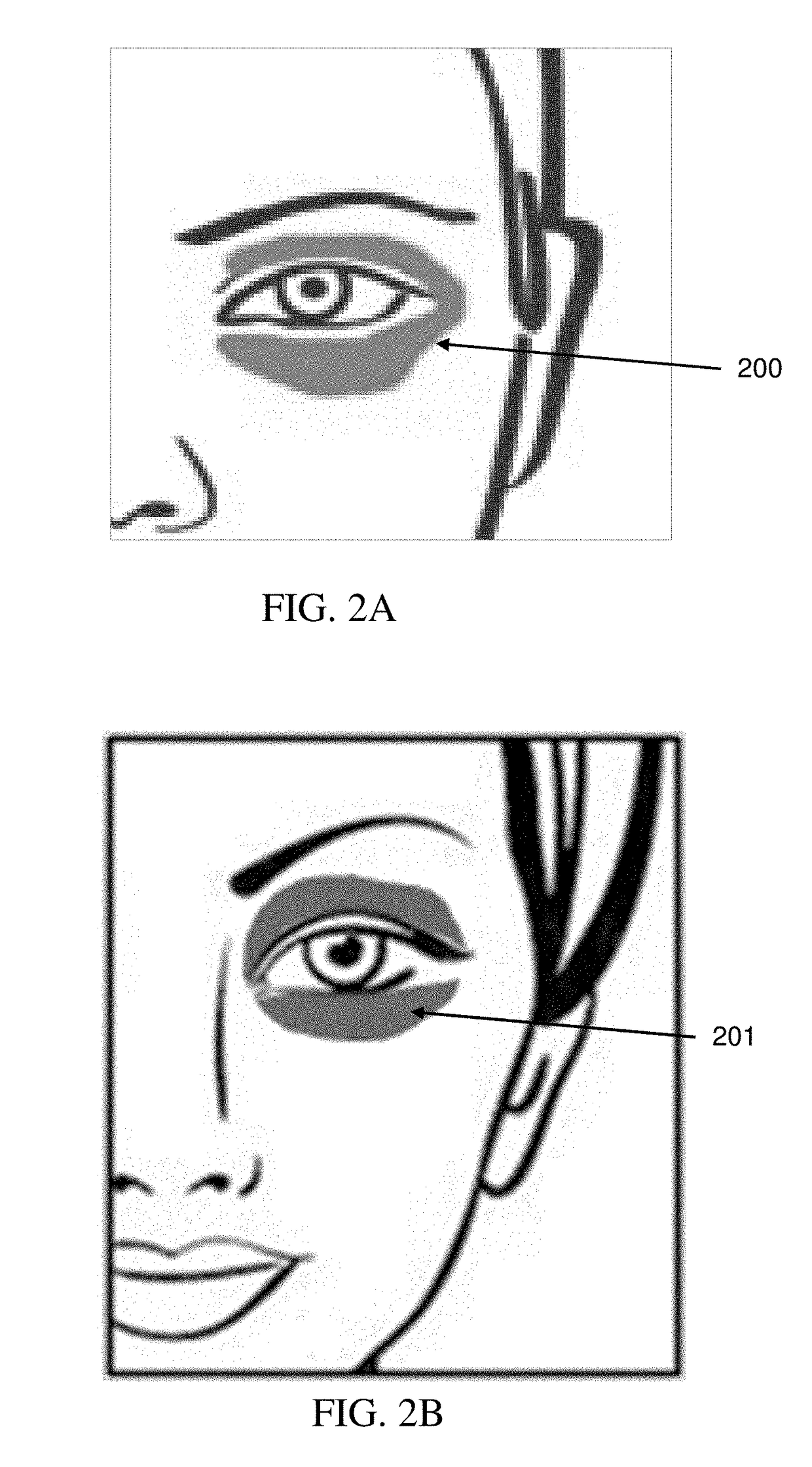Products and methods for treating periorbital dyschromia
- Summary
- Abstract
- Description
- Claims
- Application Information
AI Technical Summary
Benefits of technology
Problems solved by technology
Method used
Image
Examples
example 1
tudy—Treating Type 2 and Type 3 Periorbital Dyschromia
[0121]This example demonstrates the ability of pumpkin seed extract containing compositions of the present array to improve the appearance of Type II and Type III periorbital dyschromia. Twenty-five Caucasian female test subjects aged 20 to 60 were enrolled in a nine-week, split-face, round-robin design study to evaluate the ability of a pumpkin seed extract to improve the appearance of Type II and Type III periorbital dyschromia. The oil-in-water emulsion of Example R from Table 4 was evaluated in this study.
[0122]During the study, the under eye portion of the periorbital region (i.e., the shaded area 400 in FIG. 4A) on the left side of the test subject's face was treated with a test composition, and the under eye portion of the periorbital region on the right side of the test subject's face was treated with a vehicle control (i.e., the same composition as the test composition except without pumpkin seed extract). The test subje...
example 2
Study (B16—Melanin Inhibition Assay)
[0132]This example demonstrates the inability of pumpkin seed extract to inhibit melanin synthesis. It is believed that an overabundance of melanin is a key contributor to the appearance of Type I periorbital dyschromia, but not for Type II periorbital dyschromia. Thus, treating Type I periorbital dyschromia with pumpkin seed extract should not provide any improvement in its appearance, as demonstrated by the lack of melanin inhibition activity in a conventional B16 assay. This is important because it shows that a “one size fits all” approach may not be the best way to treat all types of periorbital dyschromia. For example, a composition that utilizes pumpkin seed extract may not improve the appearance of Type I periorbital dyschromia.
[0133]In this example, a commercially available B16-F1 mouse melanoma cell line from American Tissue Culture Collection, Virginia, USA was employed in a conventional melanin synthesis inhibition assay. The cell cultu...
examples /
EXAMPLES / COMBINATIONS
[0145]A. An array of products for treating periorbital dyschromia, comprising:
[0146]a. a first product that improves the appearance of a first type of periorbital dyschromia but not a second type of periorbital dyschromia; and
[0147]b. a second product that improves the appearance of a second type of periorbital dyschromia but not the first type of periorbital dyschromia, wherein the second product comprises an effective amount of an extract of Cucurbita pepo.
B. The array of paragraph A, wherein the first product provides an increase in L value in Type I periorbital dyschromia.
C. The array of paragraph A or B, wherein the first product comprises an agent selected from the group consisting of haloxyl, niacinamide, undecylenoyl phenylalanine, salicylic acid, chenopodium Quinoa Seed Extract, propyl gallate, gallyl glucoside, epigallocatechin gallatyl glucoside, and mixtures thereof
D. The array of any one of paragraphs A-C, wherein the first product comprises two co...
PUM
| Property | Measurement | Unit |
|---|---|---|
| Volume | aaaaa | aaaaa |
| Fraction | aaaaa | aaaaa |
| Fraction | aaaaa | aaaaa |
Abstract
Description
Claims
Application Information
 Login to View More
Login to View More - R&D
- Intellectual Property
- Life Sciences
- Materials
- Tech Scout
- Unparalleled Data Quality
- Higher Quality Content
- 60% Fewer Hallucinations
Browse by: Latest US Patents, China's latest patents, Technical Efficacy Thesaurus, Application Domain, Technology Topic, Popular Technical Reports.
© 2025 PatSnap. All rights reserved.Legal|Privacy policy|Modern Slavery Act Transparency Statement|Sitemap|About US| Contact US: help@patsnap.com



